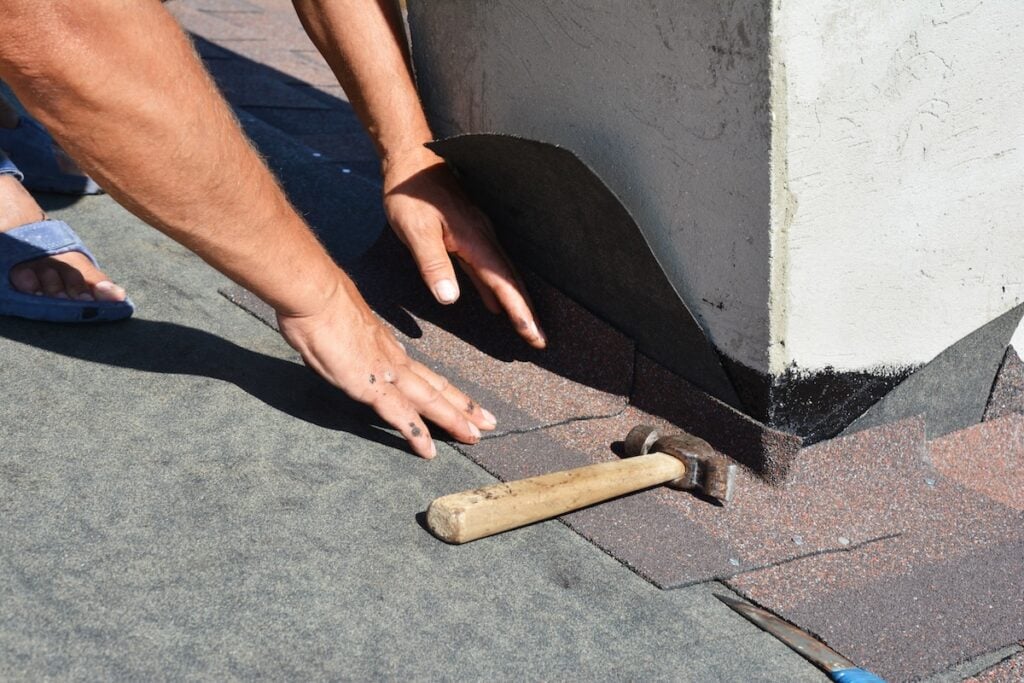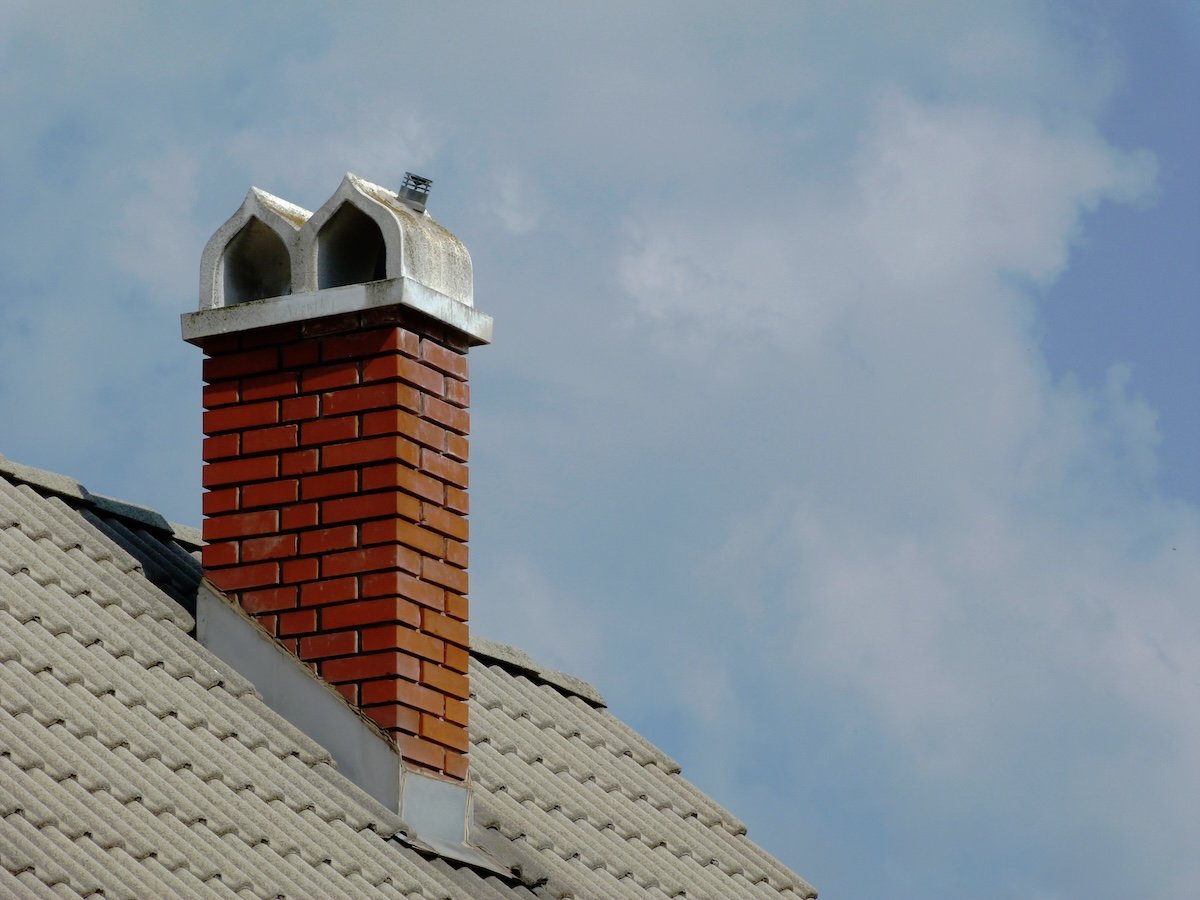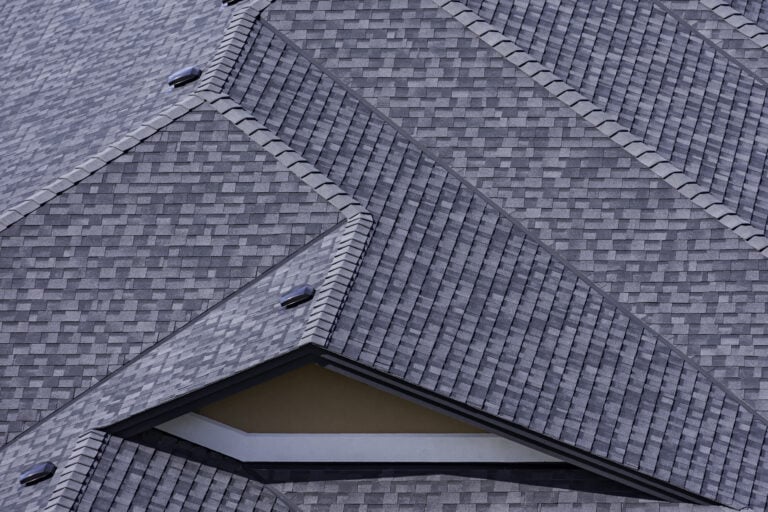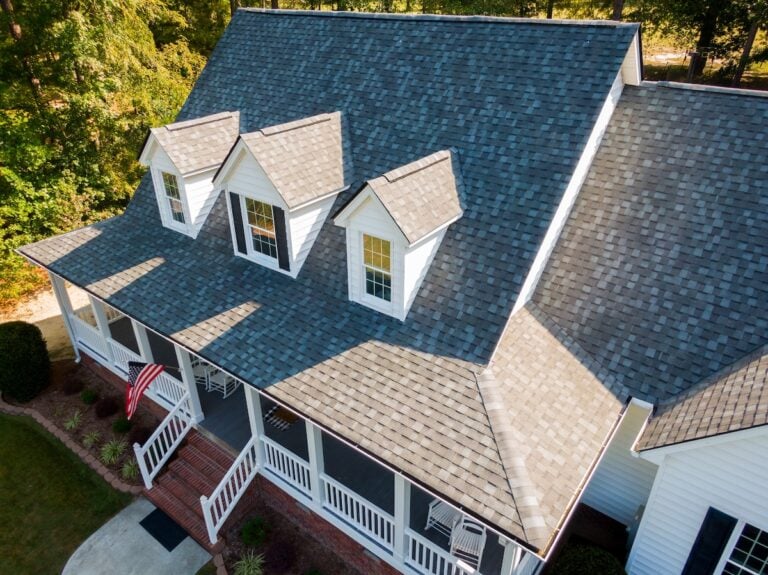Chimney flashing is one of those roofing features you rarely think about until something goes wrong. Yet, it plays a critical role in protecting your home from water damage and ensuring your roof remains structurally sound. But what exactly is chimney flashing, and why is it so important for homeowners? In this guide, we’ll cover everything you need to know about chimney flashing, including:
- What chimney flashing is and why it’s essential
- Steps to maintain chimney flashing
- When to repair or replace it
🤔 What Is Chimney Flashing?

Chimney flashing is a waterproof barrier installed at the intersection of your chimney and roof to prevent water from seeping into your home. It consists of durable materials such as aluminum, copper, or galvanized steel. The flashing seals the gaps between the chimney and the roof, creating a waterproof layer that blocks rain, snow, and other moisture.
Without proper chimney flashing, water can penetrate your roof, leading to mold growth, rotting wood, and structural damage—all of which can be costly to repair.
Types of Chimney Flashing
There are several types of chimney flashing, each designed for specific purposes and roofing styles:
- Step Flashing – Installed in “steps” along the brickwork of the chimney and overlapped by shingles to direct water away.
- Counter Flashing – Positioned on top of step flashing and attached to the chimney to create a double layer of protection.
- Base Flashing – Surrounds the base of the chimney, providing additional waterproofing.
- Cricket or Saddle Flashing – A peaked structure installed behind the chimney to divert water and debris.
✅ 5 Steps to Maintain Chimney Flashing

Taking a proactive approach to maintaining chimney flashing can save you from costly repairs. Here’s how to keep it in top shape:
1. Inspect Regularly
Performing regular visual inspections of your chimney flashing is crucial for catching potential issues early. Schedule these inspections at least twice a year, ideally in the spring and fall, to ensure your flashing is in good condition. If your area experiences severe weather, such as heavy rain, snowstorms, or high winds, it’s also important to inspect the flashing immediately afterward. Look closely for cracks, gaps, rust, or signs of wear and tear. These small issues can quickly escalate into major problems if left unchecked, leading to costly repairs.
2. Remove Debris
Over time, debris like leaves, dirt, branches, and moss can accumulate around your chimney base, causing water to pool and increasing the risk of leaks. Clearing away this buildup regularly ensures proper drainage and prevents moisture from seeping into your flashing or roofing materials. Use a broom, leaf blower, or your hands (with gloves) to gently remove debris without damaging the flashing. Pay special attention to the area where the roof meets the chimney, as this is a common spot for accumulation.
3. Seal Gaps
Even small gaps or cracks in your chimney flashing can allow water to seep through, potentially leading to leaks and water damage. To prevent this, apply roofing sealant to any visible gaps, cracks, or loose edges you spot during your inspection. Choose a sealant specifically designed for roofing materials to ensure durability and weather resistance. Clean the area thoroughly before applying the sealant to ensure it adheres properly. This simple step can significantly extend the life of your chimney flashing and keep your roof watertight.
4. Check for Rust
Metal chimney flashing, while durable, can develop rust or corrosion over time due to constant exposure to the elements. During your inspections, look closely for any signs of rust, discoloration, or flaking. For minor rust spots, you can use sandpaper or a wire brush to remove the corrosion, then apply a rust-resistant primer or paint to protect the metal from further damage. However, if the flashing is severely corroded, it may have weakened structurally, and replacing the damaged section—or the entire flashing—might be necessary. Don’t delay addressing rust, as it can compromise the flashing’s ability to keep water out.
5. Schedule Professional Inspections
While routine DIY inspections and maintenance are helpful, they may not catch every issue. That’s why it’s a good idea to have a professional roofer or chimney specialist inspect your chimney flashing at least once a year. Professionals have the expertise to identify subtle problems, such as improperly installed flashing or hidden damage, that could lead to bigger issues down the line. They can also provide specialized repairs or replacements if needed, ensuring your flashing remains in peak condition and your home stays protected from water damage.
🛠️ Repairing vs. Replacing Chimney Flashing

When your chimney flashing shows signs of damage, it’s essential to act quickly to prevent water damage to your home. Here’s how to determine whether repair or replacement is the best course of action:
When to Repair
Minor cracks, holes, or separated seams in your chimney flashing can often be addressed with roofing sealant or a patching solution. These small issues, if caught early, can be resolved without the need for a full replacement, ensuring your flashing continues to provide a secure barrier against water leaks. Similarly, if rust or corrosion is limited to a small, isolated area, it can be sanded down and treated with rust-inhibiting products to restore its durability and extend its lifespan.
When to Replace
If rust or corrosion is widespread and has compromised the structural integrity of the flashing, a full replacement is often necessary to ensure your chimney is properly protected. Missing sections of flashing can leave your roof vulnerable to water leaks and other damage, which also calls for replacement rather than repair. Additionally, if the flashing has been improperly installed or has severely deteriorated over time, leading to long-term water damage, replacement is the best option to prevent further issues from impacting your home.
🏠 Chimney Flashing Guide
At Palladium Roofing, we understand the importance of properly installed and maintained chimney flashing in protecting your home from costly water damage. Our experienced team is dedicated to providing reliable, high-quality roofing solutions that stand the test of time. With a reputation for exceptional service in Oklahoma City, we use only the best materials and expert craftsmanship to ensure your home stays safe and dry.
Don’t leave your chimney flashing to chance—trust the professionals who put your home first. Contact Palladium Roofing today for a no-obligation quote and let us take care of your roofing needs with the care and expertise you deserve.





